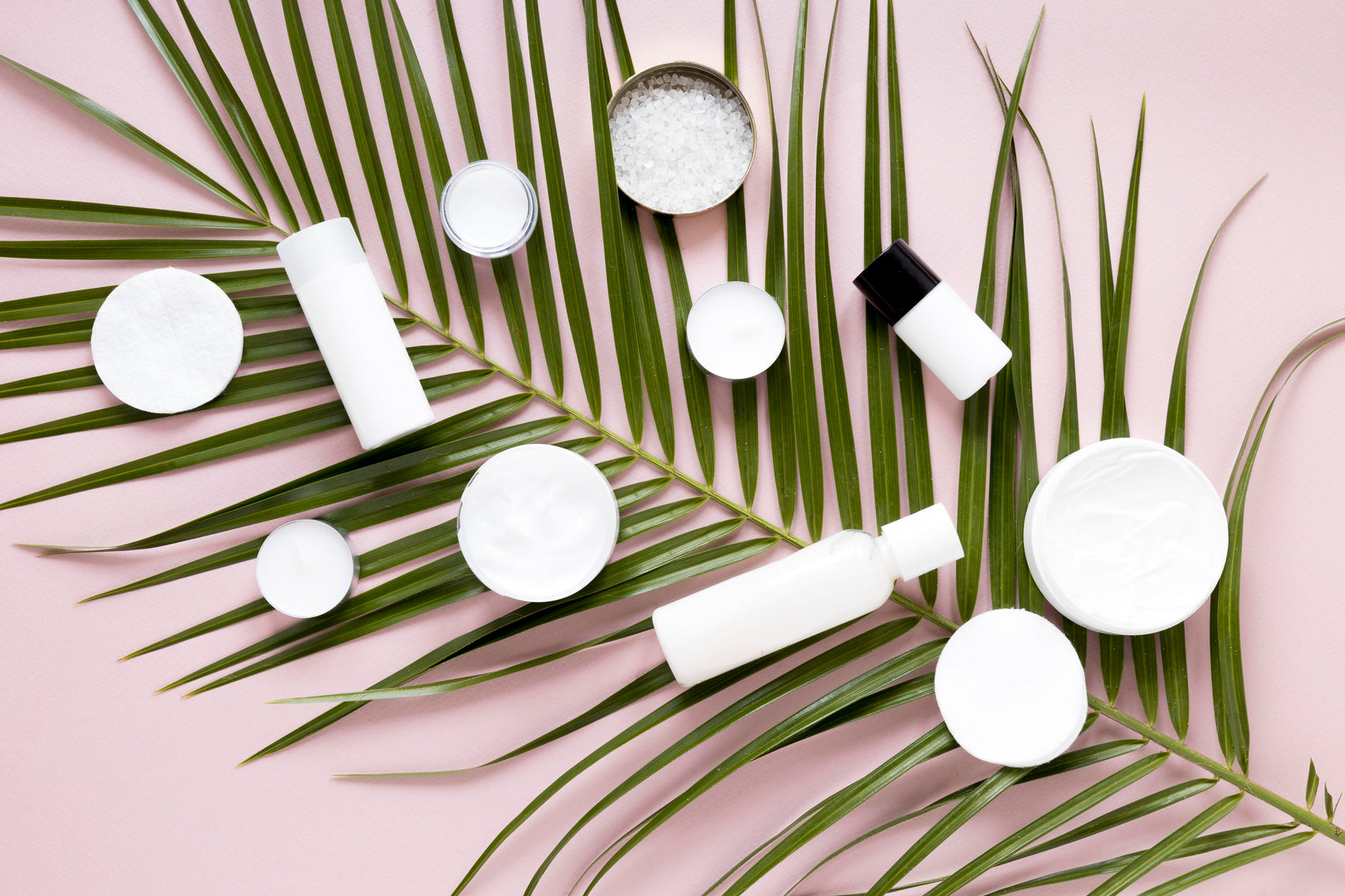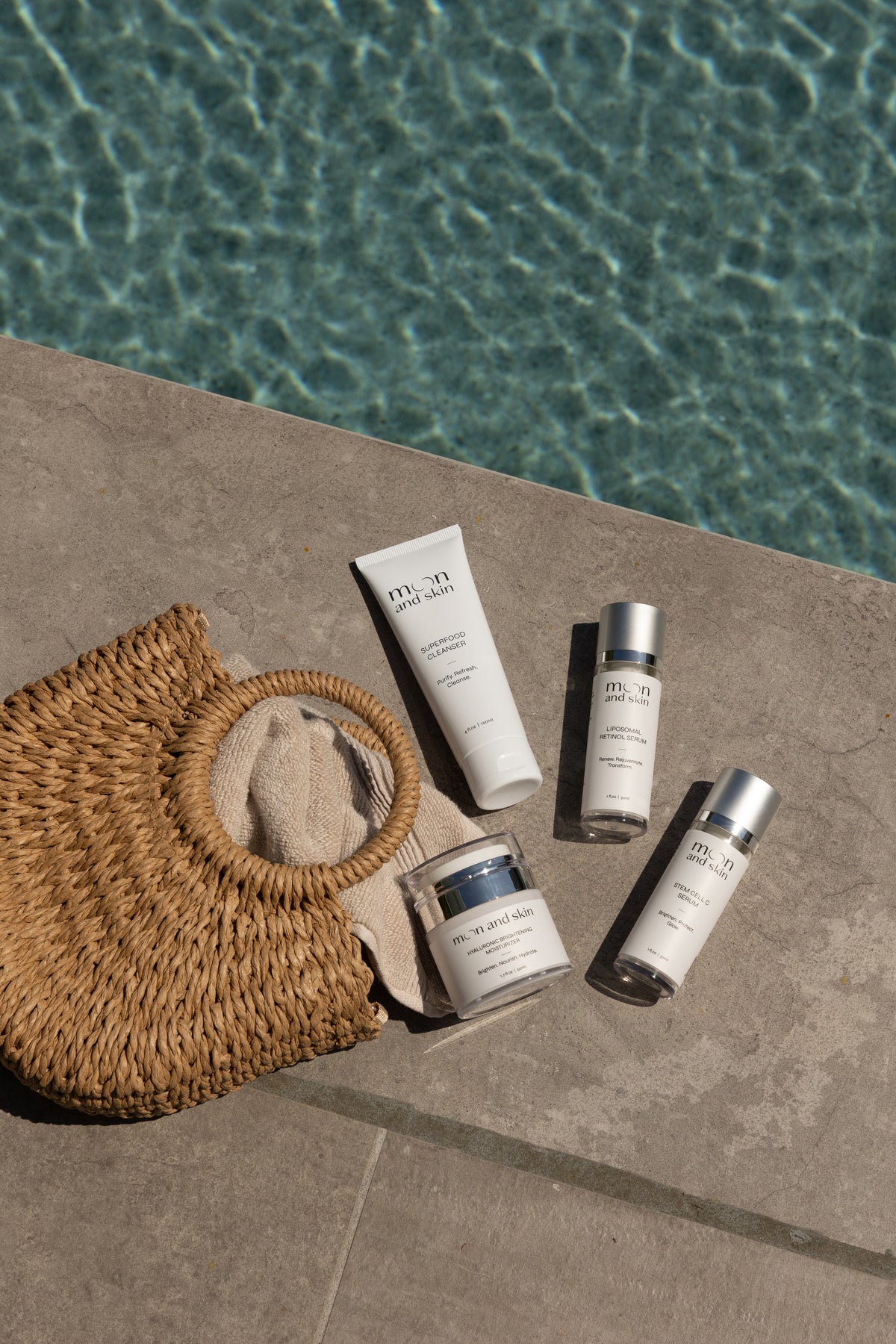Table of Contents
Introduction
Navigating the world of skincare can often feel like unraveling a complex puzzle. We understand that many of you are on a quest for clearer, brighter skin, and it’s no wonder that niacinamide has become a shining star in the skincare universe. This powerful ingredient, also known as vitamin B3, is celebrated for its myriad benefits, from reducing hyperpigmentation and fine lines to soothing inflammation and regulating oil production. But as we explore the intricacies of incorporating niacinamide into our skincare routines, a common question arises: Can I use two niacinamide serums together?
In this post, we’ll delve deep into this question, exploring the benefits and potential pitfalls of layering multiple niacinamide products. We’ll also discuss how to effectively integrate niacinamide into your skincare routine, how it works in conjunction with other ingredients, and how to select the right formulations. By the end of this post, you’ll have a clearer understanding of how to harness the power of niacinamide for your skin, ensuring you make informed choices that celebrate your unique skincare journey.
What is Niacinamide?
Niacinamide, or nicotinamide, is a water-soluble form of vitamin B3 that plays a pivotal role in maintaining healthy skin. Its multifunctional benefits stem from its ability to improve skin barrier function, reduce inflammation, and regulate oil production. Research indicates that niacinamide can help to:
- Minimize fine lines and wrinkles by stimulating collagen production.
- Reduce redness and blotchiness, making it an excellent choice for sensitive skin.
- Improve skin texture and tone, leading to a more radiant complexion.
- Diminish the appearance of enlarged pores and hyperpigmentation.
This ingredient has gained traction not only for its effectiveness but also for its gentle nature, making it suitable for various skin types, including oily, combination, and sensitive skin.
Can You Layer Two Niacinamide Serums?
Yes, you can layer two niacinamide serums together! However, there are some important factors to consider to maximize their benefits and minimize any potential irritation.
Benefits of Using Two Niacinamide Serums
- Targeted Concerns: Different niacinamide serums may contain varying concentrations or additional active ingredients designed to address specific skin concerns. For instance, one serum may focus on hydration while another targets pigmentation. Using both can provide a more comprehensive approach to your skincare.
- Enhanced Hydration: Layering two serums can boost hydration, especially if one of the serums contains humectants like hyaluronic acid. The combination can help draw moisture into the skin, providing a plump and youthful appearance.
- Increased Efficacy: By using two serums formulated with niacinamide, you may experience enhanced results. The cumulative effects can lead to improved skin texture and tone.
Precautions to Take
- Concentration Matters: While niacinamide is generally well-tolerated, using products with high concentrations (above 10%) can sometimes lead to irritation. It's advisable to start with lower concentrations and observe how your skin reacts.
- Patch Test: To avoid adverse reactions, it is wise to perform a patch test when introducing new products into your routine. Apply a small amount of each serum on a discreet area of your skin and wait 24 hours to see if any irritation occurs.
- Layering Order: When applying multiple serums, it’s essential to use the correct layering technique. Typically, the lightest texture should be applied first, followed by heavier formulations. If both serums are similar in consistency, consider which one addresses your primary concern first.
How to Layer Niacinamide Serums
To get the most out of your niacinamide serums, follow these steps:
- Start with Clean Skin: Begin your routine with a gentle cleanser like our Superfood Cleanser. This step ensures that your skin is free from dirt and impurities, allowing the serums to penetrate effectively.
- Apply the First Serum: Choose one of your niacinamide serums and apply a few drops to your face. Gently press the serum into your skin, allowing it to absorb fully before moving on to the next product.
- Wait and Observe: Give the first serum a few minutes to absorb completely. This step is crucial as it helps to maximize the benefits of each serum.
- Apply the Second Serum: After the first serum has dried, apply your second niacinamide serum in the same manner.
- Moisturize: Follow up with a hydrating moisturizer, such as our Hyaluronic Brightening Moisturizer, to seal in the benefits of both serums and provide additional hydration.
- Sun Protection: If you are using niacinamide serums during the day, don’t forget to apply sunscreen to protect your skin from UV damage.
What Ingredients Pair Well with Niacinamide?
Niacinamide is notably versatile and can be effectively combined with a variety of other skincare ingredients to enhance its benefits. Here are some pairings we recommend:
1. Hyaluronic Acid
Hyaluronic acid and niacinamide work beautifully together. While niacinamide helps to regulate oil production and improve skin texture, hyaluronic acid acts as a powerful humectant, attracting moisture to the skin. This duo can leave your skin feeling hydrated, plump, and youthful.
2. Retinol
Niacinamide can also be paired with retinol, a well-known anti-aging ingredient. While retinol encourages cell turnover and reduces the appearance of fine lines, niacinamide can help soothe the skin and minimize potential irritation caused by retinol. This combination is particularly beneficial for those concerned about aging skin.
3. Vitamin C
For years, there has been debate about the compatibility of niacinamide and vitamin C. While older studies suggested they may cancel each other out, modern formulations have shown that they can coexist harmoniously. If you choose to use them together, apply niacinamide first and wait about 10 minutes before applying vitamin C.
4. Peptides
Peptides are another excellent pairing for niacinamide. They work together to promote collagen production, leading to firmer and more youthful-looking skin. This combination is particularly beneficial for mature skin types.
5. Salicylic Acid
For those with acne-prone skin, using niacinamide alongside salicylic acid can be advantageous. Niacinamide helps to soothe and reduce inflammation, while salicylic acid penetrates pores to clear out impurities and prevent breakouts.
What Ingredients Should Not Be Mixed with Niacinamide?
While niacinamide is generally compatible with many ingredients, there are a few combinations that should be approached with caution:
- Vitamin C: As mentioned earlier, while niacinamide and vitamin C can be used together, it’s best to apply them at different times of the day or allow for a waiting period between applications.
- AHAs/BHAs: Using niacinamide with strong acids such as glycolic acid can sometimes lead to irritation. If you want to incorporate these ingredients, consider alternating their use on different days.
- High Concentrations of Niacinamide: As noted, using multiple high-concentration niacinamide products can lead to irritation. It’s best to stick to lower concentrations when layering.
Conclusion
In summary, using two niacinamide serums together is not only permissible but can also enhance your skincare routine when done correctly. By understanding how to layer your products effectively and selecting complementary ingredients, you can maximize the benefits of niacinamide and achieve your skincare goals.
At Moon and Skin, we are committed to supporting you on your skincare journey with clean, thoughtful formulations designed for every phase of life. Our Stem Cell C Serum is an excellent option to enhance your routine, brightening and protecting your skin while complementing the effects of niacinamide.
To help you build a full routine, we invite you to explore our Bundle & Save collection, which offers the perfect combination of our core products at an incredible value. Together, we can celebrate and nurture your unique skin journey.
FAQ
Can I use two different brands of niacinamide serums together?
Yes, you can use different brands as long as you consider the concentration and formulation of each product.
How often should I use niacinamide serums?
Niacinamide can generally be used twice daily, but be mindful of your skin's response and adjust as needed.
Is there such a thing as too much niacinamide?
While niacinamide is well-tolerated, high concentrations (over 10%) can lead to irritation for some individuals. It’s best to start with lower concentrations and gradually increase as tolerated.
Can niacinamide help with oily skin?
Absolutely! Niacinamide is known for its sebostatic properties, which help regulate oil production and minimize the appearance of enlarged pores.
What should I do if I experience irritation from niacinamide?
If you experience irritation, reduce the frequency of use or switch to a lower concentration product. If irritation persists, consult with a dermatologist.







